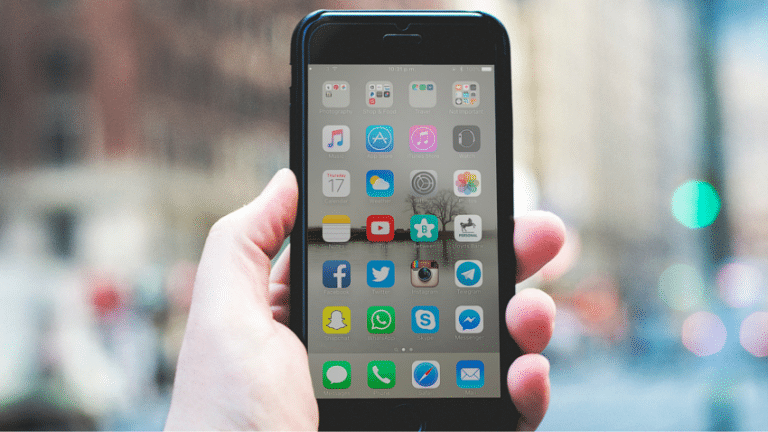This blog post was originally published in 2016. You can also read one of our newer posts on web-to-app conversions.
At this point in history, if you’re working on a native mobile app and don’t have a growth plan or distribution strategy, it’s unquestionably time to start.
The days where the respective app stores provided you a flow of new users are over. That launch story in TechCrunch or episode of Shark Tank or feature in the app store will not make your business. These momentous occasions usually drive no more than a blip in traffic, and are typically made up of early adopters who just want to browse. It’s poor quality traffic and you should expect most of it to disappear within a few weeks.
Mobile Web: The Last Frontier for Mobile App Installs
If you released an app in 2009, you were basically guaranteed thousands of ratings. In 2015, you’re lucky to break 100. You can see this clear correlation between the average number of ratings that an app has received versus its release date in the plot below.
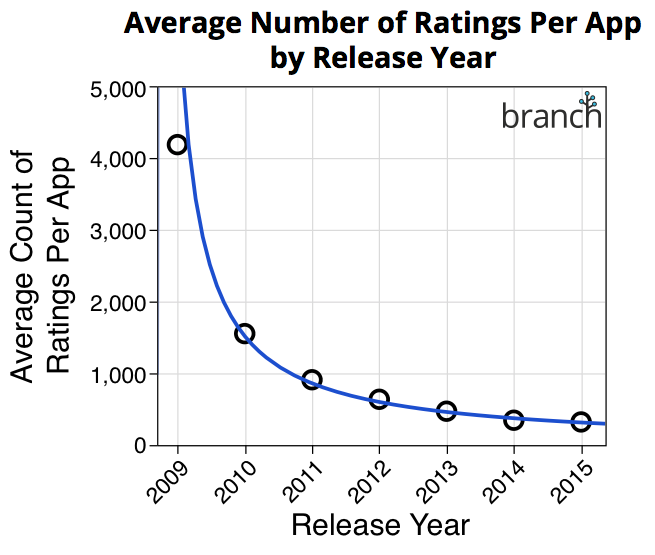
Optimizing Mobile Web to App Conversions
Our goal at Branch is to build tools to help teams crack open new channels for app adoption. Recently, we started to realize that a majority of the traffic for some of the top apps on the platform was coming from their website and had a hypothesis that this trend was something nearly all trafficked websites were seeing. To see if this was true, we pulled a list of the top 1000 apps from the Apple App Store – sorted them by a derived popularity metric1 – based on the number of ratings. We then plotted the ranking by the Alexa rank for the website listed in the App Store description. The results are below.
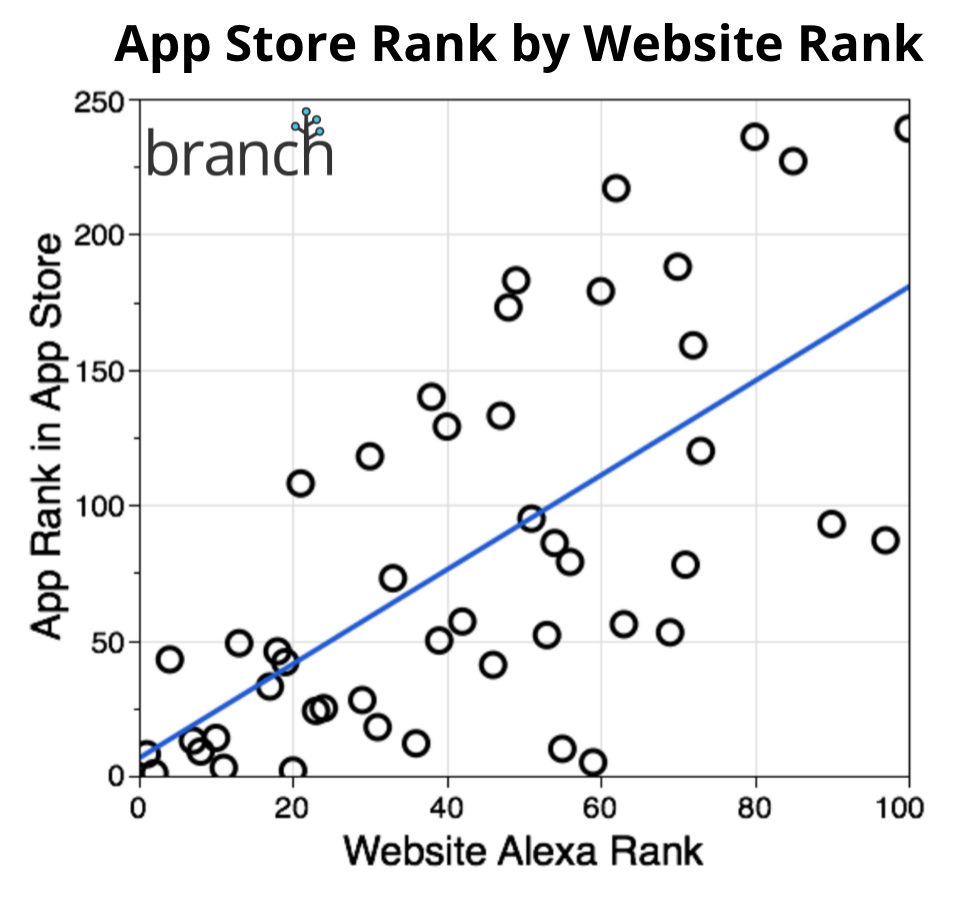
By doing some simple back of the envelope calculations on Google’s search traffic2, we estimate that Google is giving away approximately $1 billion dollars per month worth of installs with its organic search traffic. Those are installs that originate from an organic search on Google, by users clicking through a search result to view a website and subsequently installing the app.
According to this estimate, Google is giving away just as many installs via organic search as Facebook sells via their app install product. That’s a ton of value that’s being handed out to those who invest in mobile web and could be the reasoning behind their outspoken and unjustified hatred for the mobile web interstitial. They also just recently layered on punishments for all site owners who display a full page takeover to drive more adoption of their app install product.
Current Solutions for Converting Web Visits into App Users
So, how are these websites doing growing their app? Some opt for the full page takeover:
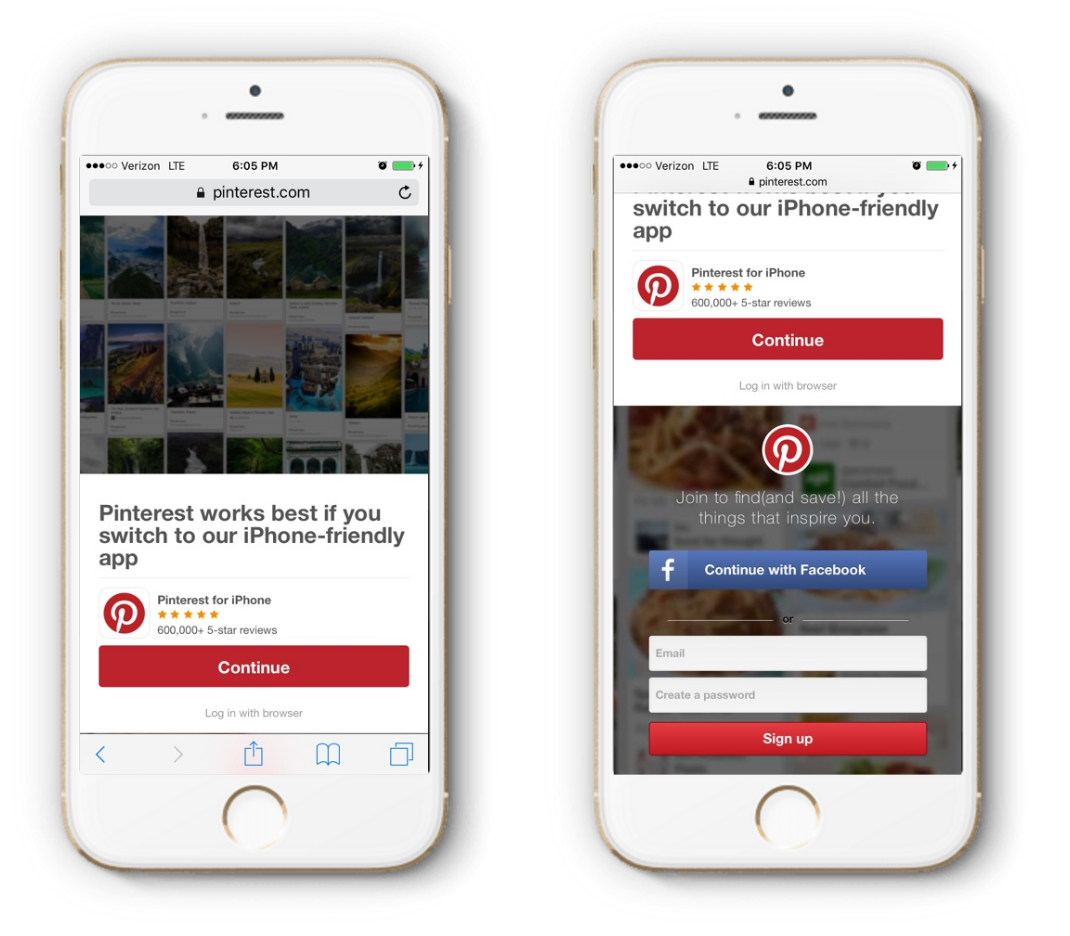
Other folks, like Imgur, are fine with users accessing the mobile site:
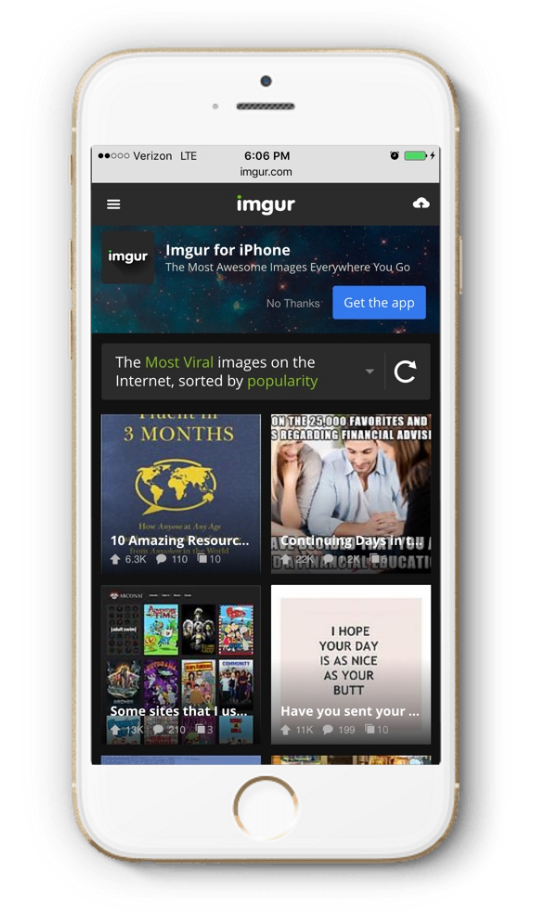
Overall, there are millions of variations and implementations to be employed depending on your circumstance. As you explore this new channel, it’s important that you use the right tools to measure and optimize it’s performance.
Get started with Branch to learn more about our web to app capabilities. Happy linking!
1. The popularity metric I used to rank apps for this blog was ‘ratings velocity’, which is the total number of ratings, divided by the total amount of time the app has been live in the store. Given that some of these apps hadn’t been live for a long time, it felt appropriate to normalize their total ratings to ratings/day, and then rank them.
2. It’s estimated that Google sees about 90 B searches per month, and that half of those are mobile, and that organic search click throughs are ~ 10%, and that a well-equipped website will drive about 15% of its installs from that mobile web view (Branch average). At a cost of $2 per install through paid channels, this works out to be about $1.3 billion worth of installs.






















